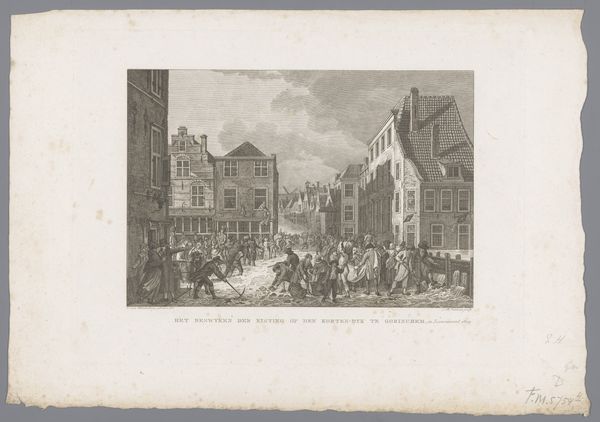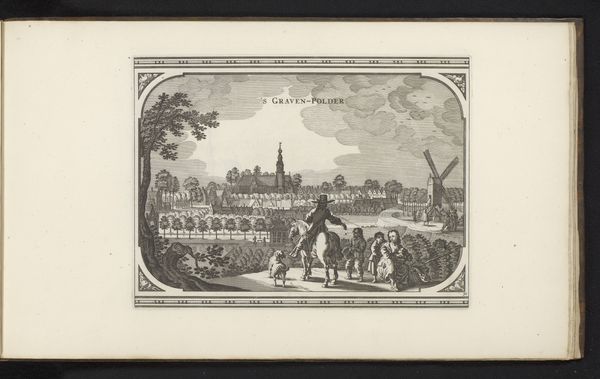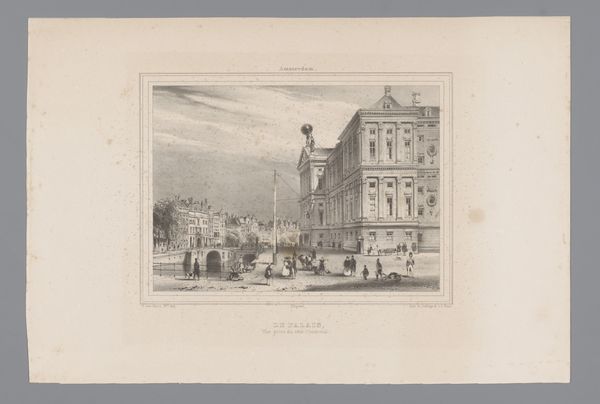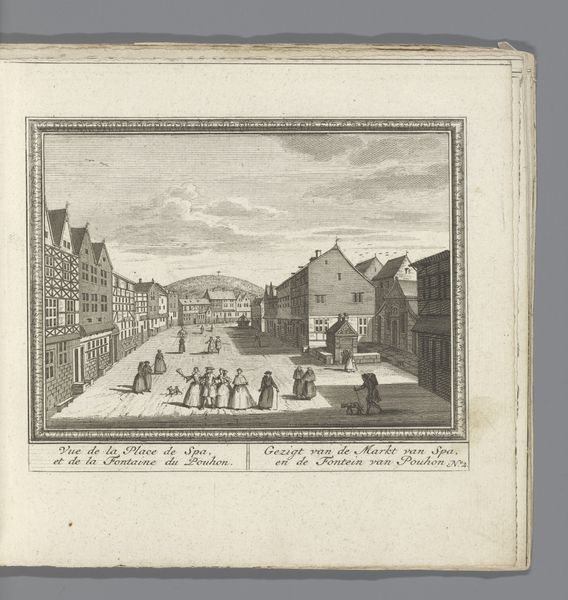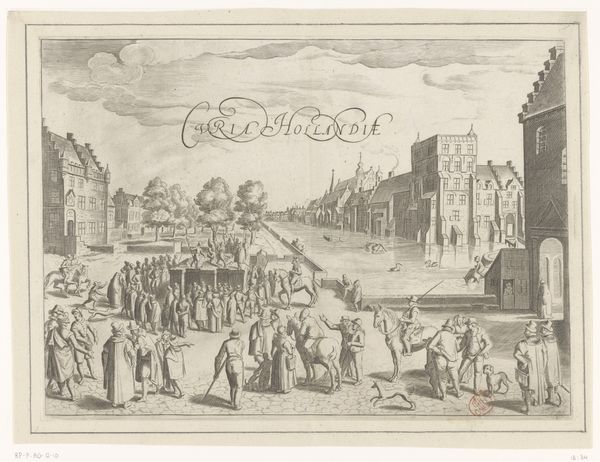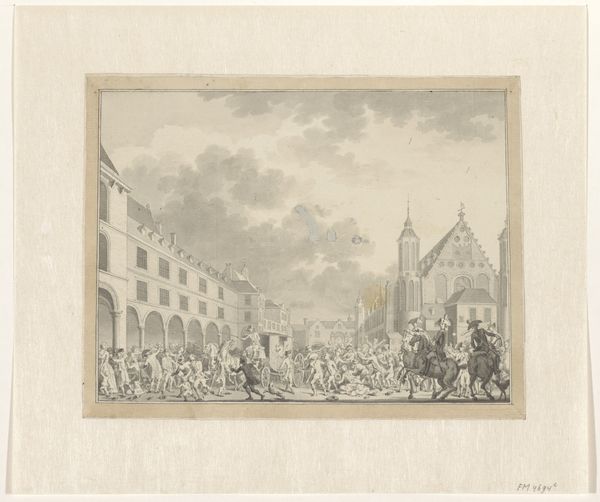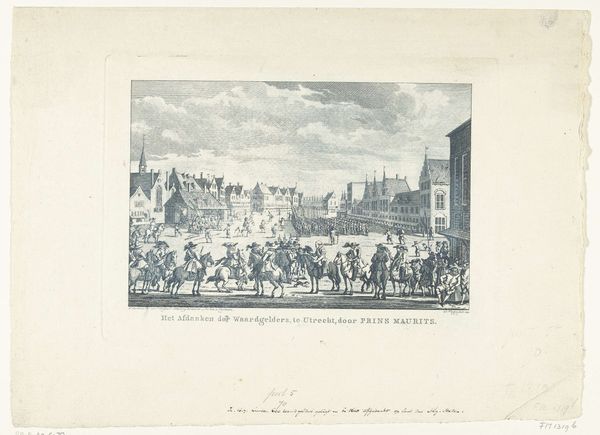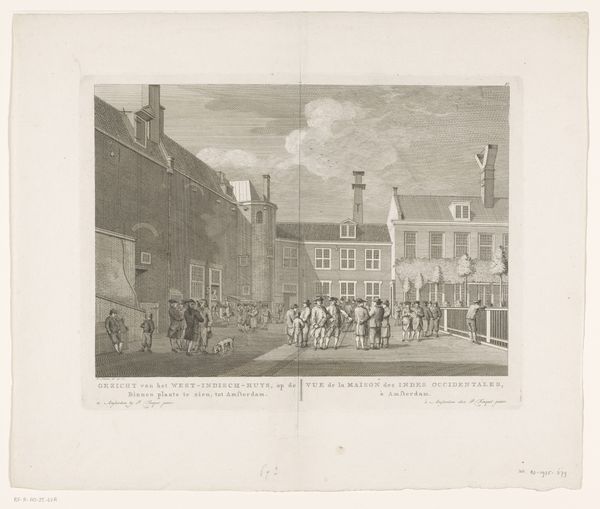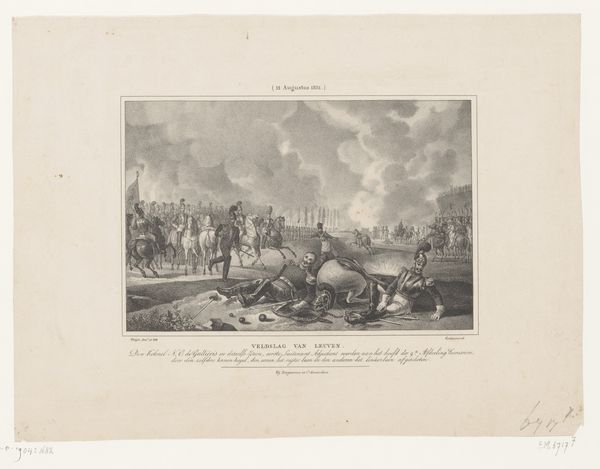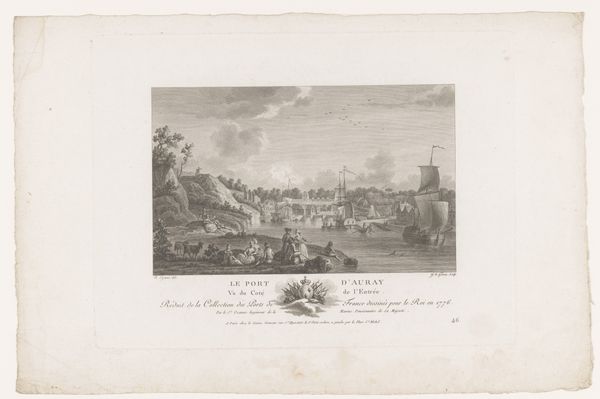
Binnentrekken van de Nederlandse troepen in Brussel via de Porte de Namur 1830 - 1831
0:00
0:00
pauluslauters
Rijksmuseum
print, engraving
#
neoclacissism
#
narrative-art
# print
#
romanticism
#
cityscape
#
history-painting
#
engraving
#
realism
Dimensions: height 235 mm, width 306 mm
Copyright: Rijks Museum: Open Domain
Editor: This engraving by Paulus Lauters, titled "Binnentrekken van de Nederlandse troepen in Brussel via de Porte de Namur," depicts Dutch troops entering Brussels. It was made between 1830 and 1831 and is now in the Rijksmuseum. The scene feels chaotic but also quite composed; I'm struck by the depiction of both the order of the advancing troops and the disorder of battle. What can you tell me about its historical significance? Curator: This print captures a key moment during the Belgian Revolution. Note how Lauters chooses to depict the "entry" as both triumphant procession and active military engagement. The positioning of the canon in the foreground and the prone bodies immediately signals the resistance to the Dutch. This wasn't simply a parade, it was a contested occupation. How do you think the location of this event, the Porte de Namur, factors into its meaning? Editor: Well, city gates have always been powerful symbols of control and access. To depict troops entering *through* the gate suggests a forceful entry, potentially against the will of the city’s inhabitants. It makes the 'narrative' of the print quite charged. Curator: Precisely. The Dutch presence in Brussels was increasingly resented, which fueled the Belgian desire for independence. And prints like these became powerful tools of propaganda. What strikes me is how a work can serve conflicting agendas – did the Dutch commission such prints too, depicting it as a 'peace keeping' operation? That’s what requires further examination. Editor: That makes me think differently about its role. It is no longer merely a historic rendering, but a loaded object shaped by the very forces it represents. Curator: Indeed. Looking closely reveals layers of political meaning embedded within the cityscape. And considering who funded, circulated, and consumed these images reveals the complex public life of art.
Comments
No comments
Be the first to comment and join the conversation on the ultimate creative platform.
